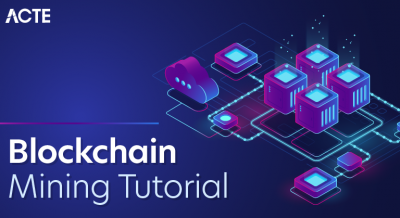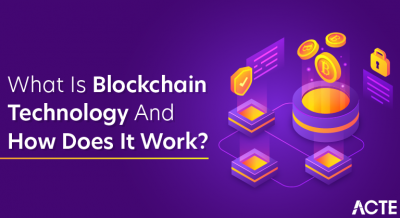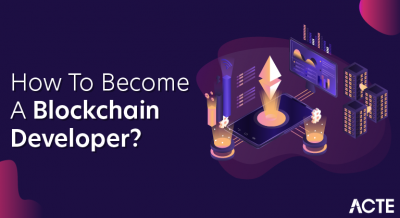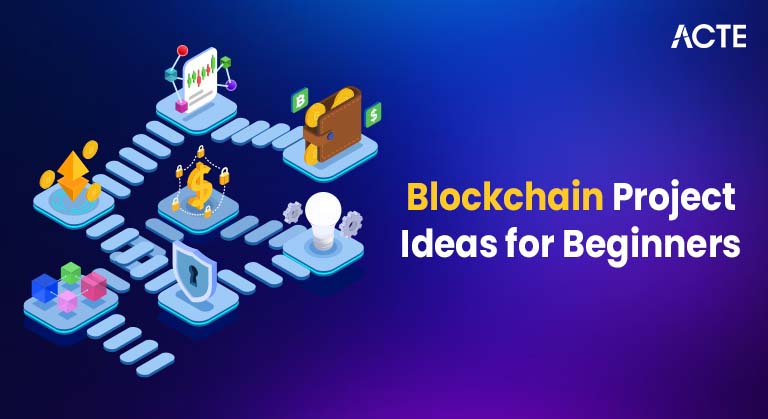
- Blockchain-Based Voting Systems
- Decentralized Finance (DeFi) Projects
- Supply Chain Management
- Healthcare Record Management
- NFT and Digital Art Platforms
- Identity Verification Systems
- Gaming and Play-to-Earn Models
- Conclusion
Blockchain-Based Voting Systems
Elections are the cornerstone of democracy, yet they often face challenges such as fraud, inefficiencies, and low voter turnout. Traditional voting systems can be vulnerable to tampering, delays, and lack of transparency, which can undermine public trust in the electoral process. Blockchain technology offers a promising solution to these issues by providing a transparent, tamper-proof, and decentralized platform for conducting elections securely and efficiently. By recording votes on an immutable ledger, blockchain ensures that every vote is accurately counted and cannot be altered or deleted, enhancing the integrity of elections. Several innovative project ideas harness blockchain’s potential in voting systems. One such idea is a Smart Ballot decentralized application (DApp) that allows users to cast their votes using their digital identities. This DApp records votes directly on the blockchain, providing transparency and ensuring that the voting process is verifiable and secure, a practical application often discussed in Blockchain Training. Another idea is a Blockchain Polling System designed for smaller communities, organizations, or universities. This system enables decentralized governance by allowing members to vote on key decisions, serving as a testbed for wider adoption of blockchain-based voting. To further boost voter confidence, an Audit Trail Viewer can be developed as a tool that lets citizens verify that their votes were counted correctly, all while preserving voter anonymity. Such tools enhance transparency without compromising privacy. The technology stack for these projects typically involves Ethereum or Tezos for deploying smart contracts, which manage voting logic. IPFS (InterPlanetary File System) can be used for decentralized storage of election data, ensuring it is distributed and resistant to censorship. MetaMask wallet integration allows users to connect their digital wallets securely and participate in voting. Solidity is commonly used to write the smart contracts, enabling automated, transparent, and secure vote handling. Overall, blockchain-based election solutions have the potential to revolutionize democratic processes by making voting more secure, accessible, and trustworthy.
Are You Interested in Learning More About Blockchain? Sign Up For Our Blockchain Training Course Today!
Decentralized Finance (DeFi) Projects
Decentralized Finance, or DeFi, is revolutionizing traditional financial systems by removing intermediaries such as banks and brokers. It provides open and permissionless access to a wide range of financial instruments, including lending, borrowing, and trading. By leveraging blockchain technology, DeFi platforms offer transparency, efficiency, and greater financial inclusion, enabling anyone with an internet connection to participate in global finance without relying on centralized institutions. There are several exciting project ideas within the DeFi space that can influence the Salary for a Blockchain Developer. One popular concept is a Crypto Lending Platform, where users can lend their cryptocurrency assets to others and earn interest in return. This peer-to-peer lending model eliminates the need for traditional banks and offers more attractive rates for both lenders and borrowers. Another idea is to build a Decentralized Stablecoin, which is a cryptocurrency designed to maintain a stable value. This stablecoin could be algorithmically backed by volatile assets or a basket of cryptocurrencies, ensuring stability without relying on fiat collateral. Additionally, an Insurance DAO represents a decentralized insurance platform where users pool funds collectively and vote on insurance claims, creating a transparent and community-driven risk-sharing model. The technology stack for building DeFi applications often includes Ethereum or Binance Smart Chain as the underlying blockchain platforms due to their robust smart contract capabilities.
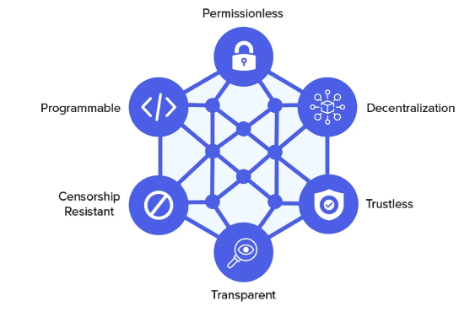
Chainlink oracles are commonly integrated to provide reliable off-chain data such as price feeds, which are critical for accurate lending rates and stablecoin value. Web3.js or Ethers.js libraries facilitate interaction between the front-end and blockchain. Ensuring security is vital, so smart contract auditing tools like MythX are used to detect vulnerabilities before deployment. Key challenges in DeFi include ensuring the security of smart contracts to prevent hacks, navigating evolving regulatory landscapes, and maintaining reliable liquidity and accurate price oracles to keep the ecosystem healthy and trustworthy.
Supply Chain Management
- Supply Chain Challenges: Traditional supply chains often face issues like opacity, fraud, and inefficiencies. Lack of transparency makes it difficult to verify the authenticity and handling of goods, resulting in financial losses and damaged brand reputation.
- Provenance Tracker: A blockchain-based provenance tracker can record every step of a product’s journey from origin to destination. For example, coffee beans can be traced from farms to retail stores, ensuring authenticity and allowing consumers to verify product history securely.
- Cold Chain Monitoring: By combining IoT sensors with blockchain, cold chain monitoring tracks temperature-sensitive goods such as vaccines or fresh food in real-time, highlighting one of the Industries That Blockchain Will Disrupt in Future.
- Anti-Counterfeit Platform: Blockchain can serve as a secure authentication system for luxury goods and pharmaceuticals. By registering products on the blockchain, manufacturers and consumers can verify legitimacy, helping to reduce counterfeit goods and fraud in the market.
- Use Cases: Blockchain applications in supply chains extend to food safety by verifying the origin and handling of perishables. Ethical sourcing benefits by transparently documenting fair labor practices and sustainable material procurement. Medical supplies are also tracked to guarantee authenticity and proper handling.
- Technology Stack: Key technologies for blockchain supply chain solutions include enterprise platforms like Hyperledger Fabric or public blockchains like Ethereum. IoT devices provide real-time data, and QR codes enable simple product verification by consumers and stakeholders.
- Benefits: Integrating blockchain into supply chains boosts transparency, reduces fraud, and builds trust among all participants. It empowers consumers with verifiable product information while helping businesses optimize operations and ensure compliance.
- Fragmented Medical Records: Patients’ medical records are often scattered across different providers and systems, making access difficult and increasing the risk of errors or data breaches. This fragmentation undermines care continuity and patient privacy.
- Patient-Centric Record App: A blockchain-based app can empower patients by giving them full control over who accesses their medical data, a use case frequently covered in Blockchain Training.
- EMR Blockchain Network: Hospitals and healthcare providers can join a permissioned blockchain network to share electronic medical records (EMRs) securely. Privacy-preserving techniques protect patient confidentiality while enabling seamless data exchange for better diagnosis and treatment.
- Prescription Verification DApp: A decentralized application (DApp) can help verify prescriptions on the blockchain, preventing misuse, forgery, and duplication of drugs. This system safeguards patients and reduces healthcare fraud.
- Tech Stack Private Blockchains: Solutions often use private or consortium blockchains such as Quorum or Hyperledger Fabric, which offer enhanced privacy, control, and scalability suitable for sensitive healthcare data.
- Data Storage and Integrity: Instead of storing sensitive medical data directly on-chain, platforms use decentralized storage like IPFS or Arweave to hold encrypted data hashes. This approach ensures data integrity and availability without compromising privacy.
- Privacy Enhancements: Zero-knowledge proofs and other cryptographic methods enable data verification without revealing underlying patient information. These privacy-preserving techniques maintain confidentiality while supporting interoperability and compliance with regulations like HIPAA.
- What is Decentralized Identity (DID): Decentralized Identity gives individuals full ownership and control of their personal credentials. Instead of depending on centralized databases, users manage their identities through secure digital wallets, improving privacy and security.
- Self-Sovereign Identity Wallet: This mobile application allows users to store, manage, and share verifiable credentials such as IDs, health records, and certifications. Users decide who can access their information, enhancing control and reducing the risk of data misuse.
- Blockchain KYC Platform: A decentralized Know Your Customer system enables users to upload identity documents once in the process of How To Become a Blockchain Developer.
- Credential Verification for Education: Educational institutions can issue diplomas and certifications on-chain. This enables employers and academic bodies to instantly verify achievements, cutting down on manual checks and eliminating fraudulent claims.
- Tech Stack: Popular identity frameworks include uPort, Sovrin, and Civic. These tools support secure identity creation and are often built using decentralized identifiers and blockchain networks for data integrity and transparency.
- Standards and Privacy: Solutions are based on W3C standards for Decentralized Identifiers and Verifiable Credentials. Zero-knowledge cryptographic methods are often used to confirm specific claims without revealing underlying personal information.
- Industries That Benefit: Banks can simplify customer onboarding and KYC compliance. HR departments can efficiently verify education and employment history. Governments can issue digital ID systems that improve service delivery and reduce identity fraud.
To Explore Blockchain in Depth, Check Out Our Comprehensive Blockchain Training Course To Gain Insights From Our Experts!
Healthcare Record Management
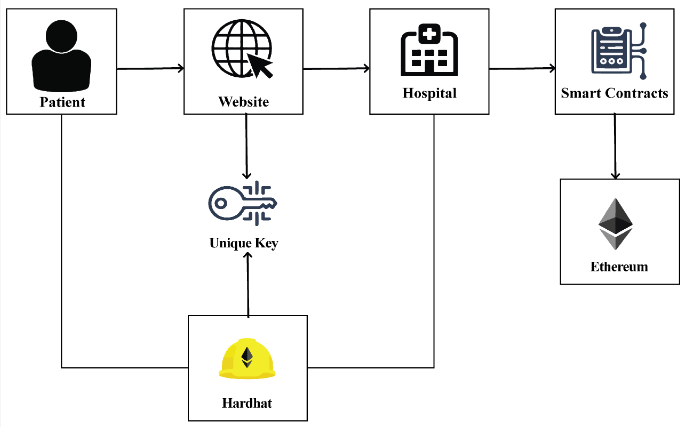
NFT and Digital Art Platforms
Non-Fungible Tokens, or NFTs, have fundamentally transformed the concept of digital ownership. Unlike traditional digital files, NFTs represent unique assets on the blockchain, allowing creators to prove authenticity and scarcity. This innovation has opened up new opportunities across various domains such as digital art, music, collectibles, and even memes, enabling creators to monetize their work directly without relying on intermediaries. NFTs empower artists and content creators to reach global audiences while maintaining control over their intellectual property and royalties. Several promising project ideas harness the potential of NFTs. A Decentralized NFT Marketplace, for example, allows users to mint, buy, and sell NFTs in a fully decentralized environment, removing dependence on centralized platforms that can impose fees or restrict access. Another compelling idea is an NFT Ticketing System, where Non-Fungible Tokens serve as digital event tickets, helping people learn How to Start a Career in Blockchain Technology. This application reduces ticket fraud and scalping by providing verifiable ownership on the blockchain. Additionally, Dynamic NFTs are an emerging concept where NFTs evolve over time based on user interaction or external data. For instance, a digital character might “grow” or change appearance depending on how its owner engages with it. Monetization strategies for NFT platforms often include transaction fees on sales and trades, premium features for minting exclusive NFTs, or offering custom smart contract deployment services for creators seeking tailored solutions. The technical foundation for these projects typically involves blockchains like Ethereum or Polygon, both of which support Non-Fungible Tokens standards such as ERC-721 and ERC-1155. Metadata associated with NFTs such as images, videos, or attributes is usually stored on decentralized storage solutions like IPFS, ensuring permanence and censorship resistance. Frontend integration is commonly handled using Web3.js, which facilitates smooth interaction between users’ wallets and the blockchain. Overall, NFTs continue to unlock new creative and economic possibilities, reshaping how digital content is owned, traded, and experienced worldwide.
Identity Verification Systems
Gaming and Play-to-Earn Models
Blockchain technology is revolutionizing the gaming industry by unlocking new revenue streams for players and enabling true ownership of in-game assets through NFTs. Unlike traditional games where virtual items are controlled by the game developer, blockchain games give players full control over their digital assets, which can be bought, sold, or traded freely on decentralized marketplaces. This shift creates economic incentives for players and developers alike, fostering a more engaged and vibrant gaming community. Several innovative project ideas highlight the potential of blockchain gaming. One popular concept is an NFT-Based Role-Playing Game (RPG) where players can own weapons, characters, and virtual land as NFTs. These assets have real-world value and can be traded or upgraded, offering a richer and more immersive experience. Another exciting idea is a Play-to-Earn Battle Arena, where users earn tokens based on their participation and victories in battles, illustrating concepts from What is Blockchain Technology & How Does It Work. This model rewards skill and dedication, motivating players to compete and contribute to the game ecosystem. Additionally, a Blockchain Leaderboard System can provide transparent rewards to top performers, ensuring fairness and encouraging competitive play. Game developers and platforms can generate revenue through various streams, including fees on transactions within the in-game marketplace, selling premium access passes or exclusive content, and implementing tokenomics models that use governance and utility tokens to incentivize community participation and long-term engagement. The technology stack for blockchain gaming often combines popular game engines like Unity or Unreal Engine with blockchain platforms such as Ethereum, Solana, or Immutable X, which offer scalability and low transaction costs. Backend support can be managed using tools like Moralis, while assets such as NFTs and game data are stored on decentralized networks like IPFS to ensure permanence and censorship resistance. Overall, blockchain gaming promises to reshape the player experience by blending entertainment with real economic value and community governance.
Preparing for a Blockchain Job Interview? Check Out Our Blog on Blockchain Interview Questions and Answers
Conclusion
Blockchain technology offers fertile ground for innovation across a wide range of industries, from finance and governance to gaming and environmental sustainability. Whether your goal is to improve transparency in elections, reinvent digital identity management, or gamify environmental action to promote sustainability, there is a blockchain project idea waiting for your unique perspective and creativity. The key to success lies not only in having a great idea but also in selecting the right technology stack and deeply understanding the needs of your target users. By doing so, developers can build meaningful solutions that move beyond the initial hype and deliver tangible, lasting value. At its core, blockchain’s true power comes from its ability to decentralize authority, reduce reliance on centralized intermediaries, and give users full ownership and control over their data and assets, fundamental concepts covered in Blockchain Training. This decentralization fosters greater transparency and trust, while also encouraging innovation through open and permissionless participation. These principles are powerful enough to transform existing systems, such as traditional finance or supply chains, and to create entirely new paradigms that were previously unimaginable. As the blockchain ecosystem continues to grow and mature, the opportunities for innovation are endless. Whether you are an individual developer, a startup founder, or part of an enterprise team, the time to get involved is now. Choose an idea that resonates with your passion and expertise, gather a talented team, and start building. The next big decentralized revolution could very well begin with your project, shaping the future of technology, business, and society. With determination, creativity, and the right tools, you have the potential to make a significant impact in this exciting space.


